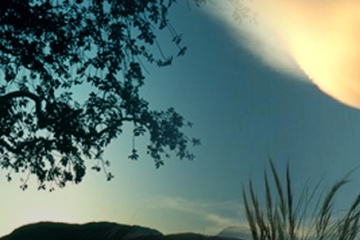Reinventing Organizations by Frederic Laloux – as an inspiring context for the work of leadership coaches
6 January 2015
Yes it’s a bit of a cliché to say of the latest leadership tome something like, ‘this is the most important book written over the last 10 years’ but I’m going to say it anyway: Frederic Laloux’s ‘Reinventing Organizations’ is an inspiring and brilliantly researched treatise on the next organisational and leadership paradigm, and may become one of the most important leadership books written for a very long time (and I hope to justify this assertion!)
If you haven’t come across it yet (only published in February last year), the author describes the emergence of a new organisational model that is following a corresponding shift to a new stage of consciousness, worldview or paradigm. For those of you who are familiar with developmental psychology, Ken Wilber’s work or any of the many stage development models (Graves, Loevinger, Wade, Kohlberg, Kegan etc.), this will be familiar territory. What is less familiar is the accessible way this thinking is applied to the organisational and leadership domain (one of Wilber’s blind spots), and the painstaking research that Laloux has undertaken to examine examples of the new organisational model emerging in practice (citing 12 widely differing types of organisation across the world). He contrasts the Evolutionary (or ‘Teal’, to use Wilber’s colour system) paradigm with those that came before throughout history, and shows how evolutionary organisations can work radically differently (at once they can be more effective, ecological and human to work in) to the great majority that we know and experience today which are mostly reflections of the prevailing Achievement (Orange) and Pluralistic (Green) value systems. Drawing from evidence, he identities three common characteristics or principles of evolutionary organisations – self-management, wholeness and evolutionary purpose. He plays with the metaphor or organizations as living systems or organisms with a purpose of their own, in contrast to the clunky machine metaphor’s that identify the Achievement paradigm or the social and familial metaphors that alert us to Pluralistic-Green.
Most of the book involves unpacking how the structures, practices and cultures of evolutionary organisations reflect the principles or self-management, wholeness and evolutionary purpose within the researched organisations, and although heavy going at times, this middle section will be very useful to evolutionary leaders thinking about reinventing or founding their organisations in this way. In the final part he identifies the two necessary conditions for the emergence of Teal organisations – a sufficient level of psychological development of the top leadership (e.g. CEO or founders), and ‘enlightened’ owners who are willing to embrace the Evolutionary-Teal worldview.
The book is not without its flaws and not everyone will find it easy to read the whole way through. However, I would certainly recommend that everyone reads the first part (60 pages) as it provides the best introduction to the application of developmental psychology to the organisational domain that I have come across. Loosely based upon the Gravesian/Spiral Dynamics model, Laloux finds a way to bring a developmental perspective to organisational analysis that is consistently recognisable from my own experience. Here is a narrative that never feels elitist or academic and could really help break through the glass ceiling that seems to stop developmental thinking become more mainstream.
As well as it’s potential importance in speaking directly to leaders, this work has particular relevance to leadership coaches for several reasons that I will touch upon here. First, Laloux makes frequent references to coaching taking place within Evolutionary-Teal organisations that taken together, provide a blueprint for how the role of coaching might evolve, especially as an internal activity that replaces much conventional management activity. Second, by exploring the critical conditions and characteristics of Evolutionary-Teal organisations, he is pointing towards some of the key agenda’s that potential evolutionary leaders might bring to external coaches – e.g. how to initiate self-managing teams, how to model wholeness and authenticity within organisations, how to help an organisation’s evolutionary purpose emerge. And this is where it gets very exciting (at least from our perspective at Psychosynthesis Coaching!); bringing alive the next stage of consciousness, the evolutionary paradigm within organisations really will need the help of coaches who are grounded in a psycho-spiritual perspective, who can bring the language and grammar of identity, purpose, wholeness, authenticity, relationship, trust and transparency in a relevant and adaptable way in support of courageous leaders who may otherwise find this a lonely path. In so many places when reading this book I had the same moment of recognition – that the time for a psycho-spiritual psychology such as Psychosynthesis has now come (I will write again about this and illustrate with quotes from the book). The founder of Psychosynthesis, Roberto Assagioli was a visionary who was about 50 years ahead of his time – for example, in the way he saw organisations as living organisms. However, as Psychosynthesis practitioners we are also faced with some challenges in updating our psychology and making it fit for the purpose I describe above (again, I will write more about this).
Thirdly, there is the role that leadership coaches might play in helping their leader clients develop and evolve towards the Evolutionary-Teal worldview or paradigm. Strangely this is ignored in the book, with Laloux giving up on the possibility of influencing the vertical development of leaders, describing the process of what we call vertical development as a “complex, mysterious and spiritual process” that “happens from within and cannot be imposed on someone from the outside, not even with the best of arguments” (p238). This is where I depart from Laloux and can only imagine that he has little direct experience of supporting the paradoxical process of inner and outer development in others. Not that I am suggesting that coaches should in any way drive the vertical development agenda, but they can sense and support their client’s emergent self and desire to grow, and if they are psychosynthesis coaches, they may be drawn towards clients where the will for inner growth is strong. Admittedly this perspective may be a waste of time with many leaders and that for many organisations the best developmental path is still a horizontal one. As Laloux argues, there is still much important work that can be done within organisations who’s centre of gravity is firmly rooted in the Achievement paradigm.
Another criticism, because it is relevant to many of us working as external coaches; Laloux choses to only focus on organisations with at least 100 employees in his research and only makes a few references to smaller organisations. By doing this he seems to be missing the bigger picture of how the Evolutionary-Teal paradigm is emerging in society and how in many fields of activity, an ever adapting network of small organisations and individuals come together into virtual, project-based and temporary organisations, and how in many ways this represents a new organisational model in itself, replacing the notion of the fixed and permanent large organisation as the best way to do things. Although it may be likely that most people may continue to work in large organisations for some time to come, there is much learning that could emerge from how Evolutionary-Teal is manifesting in the virtual world of work. Anyway, as a small business founder and general portfolio worker I felt a little bit ignored! At the same time, I am taking ideas and principles from this book into my thinking about how we evolve our small, virtual organisation, Psychosynthesis Coaching Limited.
One other word of warning – in a final chapter Laloux attempts to describe what an Evolutionary-Teal society might look like in the future and things go a little bit off the rails. He seems to forget the general principle (e.g. listen to Wilber) that at least for a very long time to come, Evolutionary-Teal will co-exist, even in the most developed societies and certainly in the globalised economy, alongside all the other previous worldviews and value systems. Within this context, his speculation that society might somehow transcend beyond the need for ownership and property is a little fanciful. There is some serious work needed to explore how ownership models might work best to support Teal organisations, and Laloux largely sidesteps this challenge.
But as a whole this is a marvellous book and my criticisms are really nit-picking (and perhaps I am a bit jealous that I didn’t write it myself!) and minor in comparison to what he has achieved – please buy it, read it and maybe give a copy to a leader that might need it!
Best wishes
Aubyn



